Az OrthoGraph forradalmasítja az építési dokumentációk területét. Eredetileg azért készült, hogy pontos épület- és eszközadatokkal támogassa a létesítményüzemeltetést és az ipari folyamatokat, de ugyanilyen hatékonynak bizonyult az építési dokumentáció létrehozásában is. Ami igazán megkülönbözteti az OrthoGraphot, az az, hogy valódi, megvalósult állapotot tükröző 3D modellt biztosít részletes objektumleltárral. Ez a funkció nemcsak az egész építési időszak alatt, hanem azt követően is elérhető. Számos sikertörténet igazolja, hogy az OrthoGraph jelentős értéket nyújt kivitelezők, fejlesztők és befektetők számára egyaránt azáltal, hogy leegyszerűsíti az építési dokumentációs folyamatokat.
További hatalmas értéknövelő tényező, hogy a létrejövő épületdokumentáció az egész épület életciklusa során hasznosítható – egészen a bontás végéig – számos produktív felhasználással.
Pontos alaprajzok verziókövetéssel:
Építkezés vagy felújítás során az épület folyamatosan változik. Az összes módosítás nyomon követéséhez, a beépített mennyiségek (pl. tégla térfogata, vakolt felület) pontos meghatározásához, valamint a későbbi berendezési tárgyak, gépek elhelyezkedésének rögzítéséhez az OrthoGraph könnyen használható falról falra, saroktól sarokig történő felméréshez – beleértve az összes ajtót és ablakot is.
Ezen felül a fényképek és panorámaképek nagy értéket képviselnek az épület különböző állapotainak nyomon követésében, illetve olyan elemek dokumentálásában, amelyek elsőre nem tűnnek fontosnak, de később jelentős szerepet kaphatnak egy-egy egyeztetés során. A rendszeres újramérések, valamint a falstruktúrák rögzítése a beszállítókkal való elszámolásban és az épületbe ténylegesen beépített elemek igazolásában is segíthetnek.
Minden módosítást az OrthoGraph verziózott formában tárol, kiegészítő megjegyzésekkel. Ez azt jelenti, hogy bármikor felmerül egy kérdés az építkezés egy adott állapotáról, az akkori alaprajz egyszerűen visszahívható.
Úgy gondoljuk, hogy ez a fajta modell és dokumentáció nem helyettesíti a pontfelhőket, mivel azoknak is megvan a maguk szerepe. Inkább nem az egész építkezés nehezen kezelhető, integrált pontfelhőjeként, hanem mérhető szegmensekként, különböző pozíciókból rögzítve, megjegyzésekkel ellátva érdemes alkalmazni őket. Ha az OrthoGraph BLK360-at az OrthoGraph által kezelt Operatív BIM-mel együtt használják, akkor egyértelmű hivatkozások ágyazhatók be a BIM modellbe a lézerszkennelés helyeihez vagy érdekes pontjaihoz. Így például, ha van egy fan-coil egység a BIM-ben, akkor a pontfelhőn megjeleníthető, hogy a csövek és elektromos vezetékek hogyan kerültek odavezetésre. Ez a két megoldás és technológia tökéletesen kiegészíti egymást.
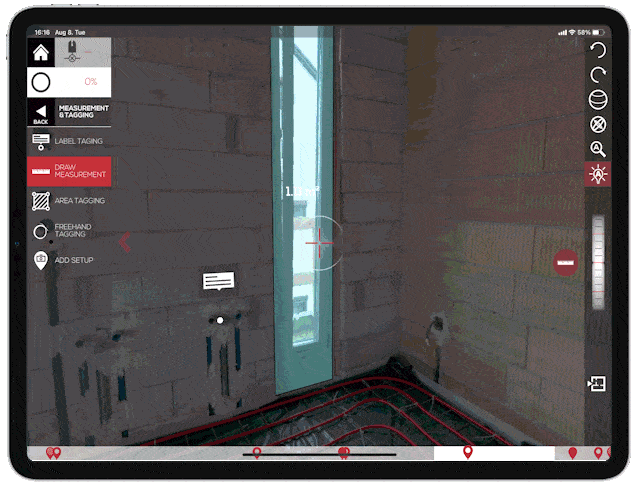
Ezen felül az OrthoGraph modellekhez nincs szükség drága, érzékeny eszközökre vagy speciális szaktudásra. Egy részletes, háromnapos képzés és a hozzá kapcsolódó vizsga után bárki, aki jól tájékozódik térben, képes az OrthoGraph segítségével helyszíni BIM adatokat rögzíteni. Mindez olyan környezetben is működik, ahol egyszerre sok ember dolgozik, por van, és nagy a kockázata annak, hogy a mérőeszköz leesik a földre. Az OrthoGraph csak kis méretű, könnyű, strapabíró eszközöket – például lézeres távolságmérőket – használ a valóság rögzítéséhez.
A lézerszkennelés ezzel szemben drága, érzékeny eszközöket, speciális felmérési szaktudást és erős számítógépes háttérrendszert igényel a feldolgozáshoz. Ráadásul általában külső szolgáltató bevonásával történik, így tőlük függ, hogy mikor érkeznek, és csak az adott pillanatot tudják rögzíteni. Az OrthoGraph esetében bármilyen változást azonnal dokumentálhatnak a saját dolgozók vagy helyszíni munkások, így nincs kockázat, hogy valami még a digitalizálás előtt eltűnik vagy le lesz fedve.
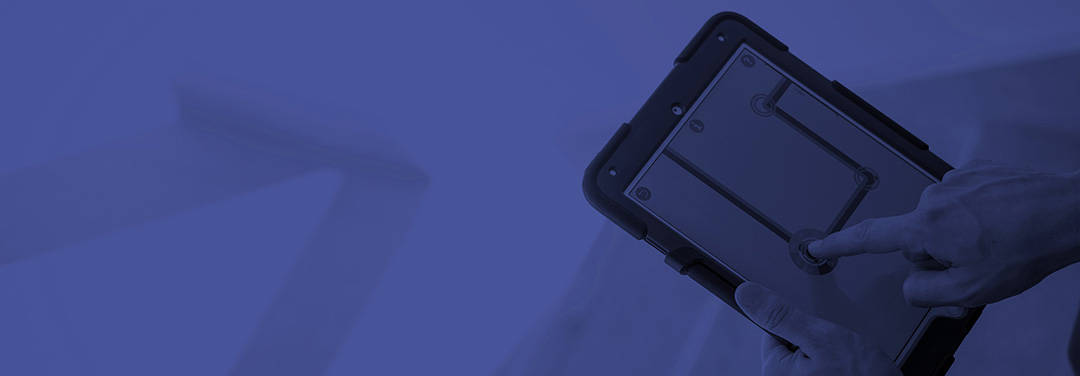
Az eszközleltár értéke:
Már önmagában a megvalósult alaprajz és a tervek közötti eltérések is komoly értéket képviselnek az elszámolások és a jövőbeni felhasználás szempontjából, de a beépített eszközök leltára ennél is nagyobb jelentőséggel bír. Például ha az egész épületben azonos fan-coilokat terveztek beszerelni ugyanattól a beszállítótól, de a készlet nem elegendő, akkor a szállítmányra akár féléves várakozás is szükséges lehet – ez viszont nem elfogadható. Ilyenkor más típusú eszközök, más gyártóktól kerülnek beszerelésre. Ha ezekről nincs átfogó leltár, akkor nemcsak azok pontos helye válik ismeretlenné, hanem a végleges megvalósulás szerinti elszámolás is megnehezül. Ha pedig kitekintünk a megszokott gondolkodásból, ez a probléma messze túlmutat az építkezésen és a kapcsolódó elszámolásokon – az épület következő életszakasza, az üzemeltetés során még nagyobb gondot okoz.
Az építkezés nem csak az építésről szól, hanem az eszközök állapotának dokumentálásáról is – például egy betört ablakról, karcos falról vagy rossz helyre telepített kazánról. Az Operatív BIM lehetővé teszi ezeknek a problémáknak az egyszerű dokumentálását, fényképes mellékletekkel együtt. Így az átadás előtt minden ismert hiba kijavítható, gyorsabbá válik az elszámolás, és végső soron elégedettebb lesz a beruházó is.
Mit nyerünk még, ha minden karbantartási pontra egyedi azonosítókat, RFID-t, QR-kódot vagy vonalkódot helyezünk el?
Pontos elemazonosítást és munkafolyamat-vezérlést. Ha van egy fontos berendezés vagy eszköz, amelyet valamilyen okból kezelni kell, akkor ezek az egyedi azonosítók lehetővé teszik annak gyors és biztos beazonosítását. Ha a megfelelő, az egyedi azonosítókat használó hibakövető rendszer áll rendelkezésre, akkor a helyszíni dolgozó köteles beolvasni az adott eszköz azonosítóját, ezzel is igazolva, hogy valóban a megfelelő elemet fogja karbantartani. Ha a rendszer erre is fel van készítve, akkor még a munkaidő nyomon követése is lehetségessé válik, így további értékes információkat kaphatunk az elvégzett munkáról.
Csak azt rögzítsd, aminek valódi haszna van – és a megfelelő eszközt használd a megfelelő célra!
Gyakran kérik, hogy minden elem kerüljön be a BIM-be, hiszen az az épület teljes tartalmát kellene, hogy képviselje. A valóságban azonban a csővezetékek, kábelcsatornák vagy részletes szobordokumentációk többsége nem képvisel valódi értéket a BIM-ben. Ezeket sokkal hatékonyabban és olcsóbban lehet rögzíteni lézerszkenneléssel készült pontfelhőkkel, amelyek később jól használhatók az átalakítások vagy felújítások támogatására. Ezek az adatok ritkán szükségesek, de amikor mégis, akkor a lehető legnagyobb pontosságra van szükség. Ez is azt támasztja alá, hogy érdemes kombinálni a különböző technológiákat, és mindig a megfelelő eszközt választani az adott feladatra.
Egyszerűen megfogalmazva: a BIM-nek karbantartási pontokra van szüksége, minden egyéb grafikai elem pedig pontfelhőkben rögzíthető – a megfelelő pillanatban, közvetlenül azelőtt, hogy azokat elfednék az építkezés során.
IFC Export – Teljes, paraméterezett pillanatkép az épületről
Az OrthoGraph lehetőséget kínál egy teljes, paraméterezett BIM modell IFC formátumban történő exportálására, amely iparági szabványnak megfelelő pillanatképet ad az épületről. A kimenet nemcsak pontos 2D és 3D alaprajzokat tartalmaz, hanem egy teljesen osztályozott eszközleltárt is, minden mért és számított adattal együtt.
Minden elem – legyen az helyiség, berendezés vagy épületszerkezet – részletes paraméterekkel van ellátva, például:
• Nettó, bruttó és takarítható területek
• Festhető és egyéb felülettípusok
• Kapcsolódó fotók és dokumentáció
• Használati metainformációk, például bérleti státusz
• Közvetlen hivatkozások az OrthoGraph 3D modellre, lehetővé téve az azonnali hozzáférést CAD és más rendszerekből
Ez az export teljes átjárhatóságot biztosít, ugyanakkor fontos megjegyezni: az IFC fájl egy statikus pillanatkép. Az OrthoGraph igazi ereje a folyamatosan frissülő modellben rejlik – amely mindig naprakészen tükrözi az épület és eszközei aktuális állapotát, így hosszú távon páratlan működési értéket biztosít.
Have you got a similar project in your mind? Have you got further questions? Want know more in a personal meeting or want to start a pilot? Click the button:
to our Newsletter
OrthoGraph
Contact us
Contact us
OrthoGraph GmbH
Gartenstrasse 7
Zug
Switzerland
6300
+ 41 (41) 5510150
9:00-18:00 Zurich Time
USA: +17609331550
UK : + 44 (20) 34119438
Other pages
Education
Rapid Survey Concept
Orthograph for Constructions
Historical Building Survey
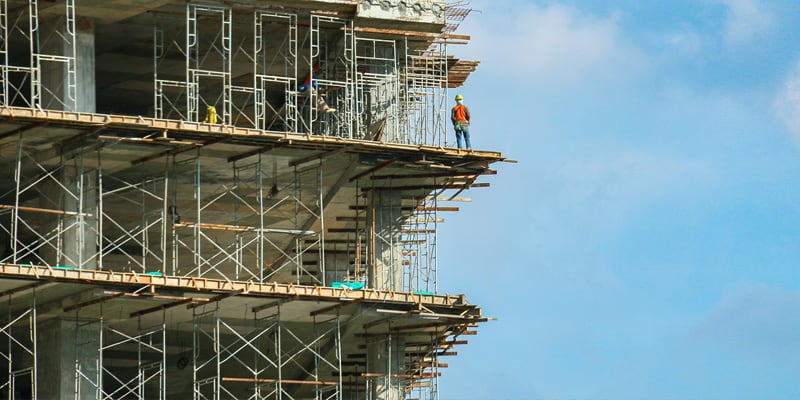
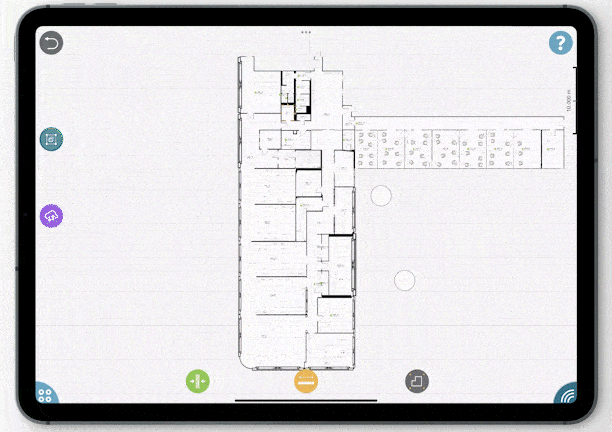
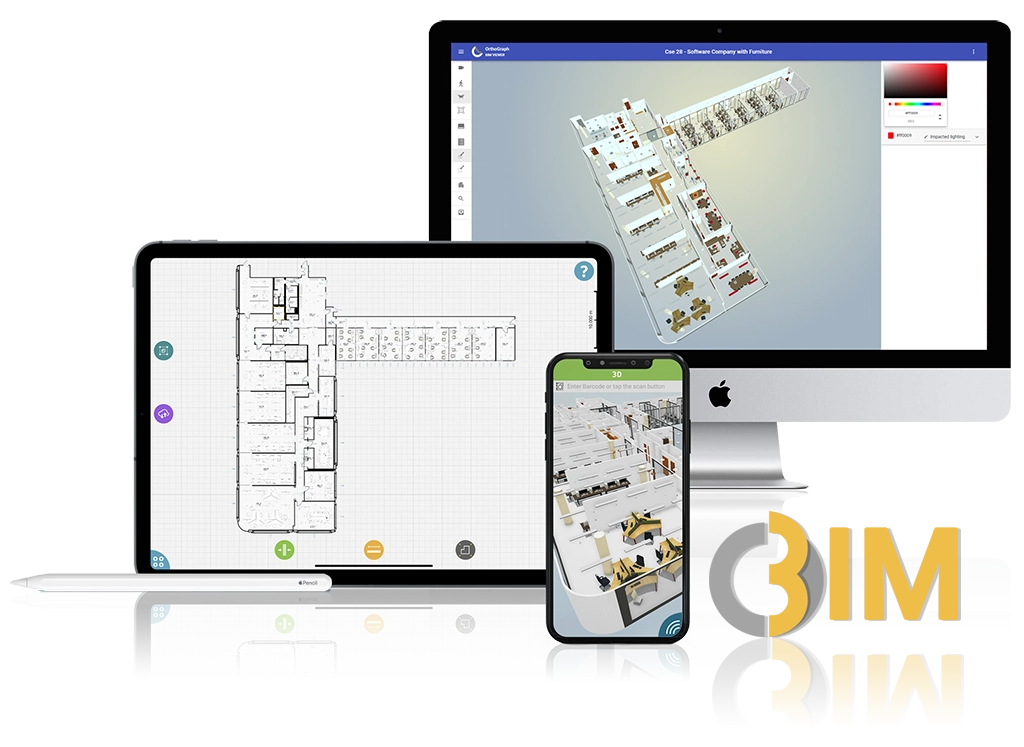
Recent Comments